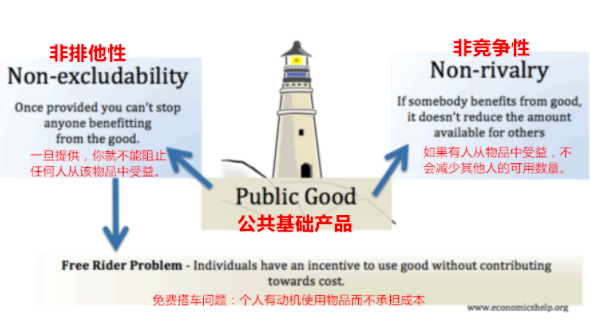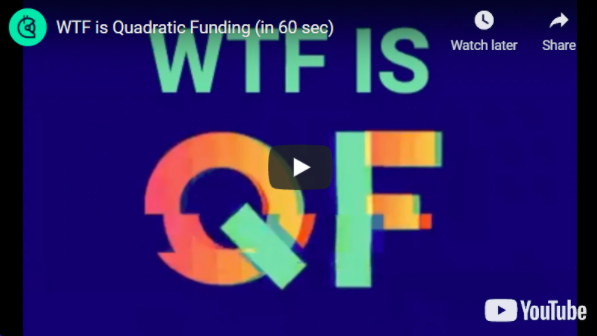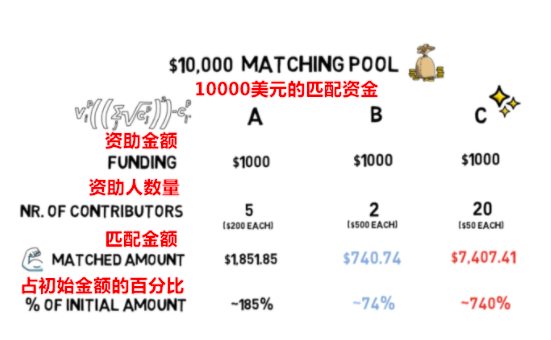EOS has sustainable and decentralized genes in the true sense. As an open network, it is about to unleash its potential to build more community-oriented public products.
Open source software is the foundation of a public good, but funding is one of the most critical unresolved issues of coordination in the information age.
first level title
What are public infrastructure products?
In economics terms, a public good is anything that is non-excludable and non-rivalrous. When something is non-exclusive, it means that it is very difficult to prevent someone from using the good, such as clean water, roads, or public parks.
Non-excludable means that it is abundant, and one person's use of the item does not substantially reduce the amount left for others. For example, if a country has clean air, it cannot prevent some citizens from breathing it, one citizen breathing clean air does not deprive another citizen of the air, so the cost of providing clean clean air to one citizen is the same as providing clean air to all citizens The cost of offering is the same.

Public goods are essential to the prosperity of a society because they establish the basic infrastructure that enables other societies to expand and develop.
Compared with private goods, public goods are often underfunded due to the difficulty of capturing value. Free markets work well for private goods because their excludability and competition means that those who pay for them enjoy their benefits, while those who do not pay do not.
The value capture mechanism of a public good is weak, because even after its creation is financed with time, money, anyone else can take advantage of it. This creates a positive externality, also known as"free ride"The problem is that a person can use a public good without paying for it.
Moreover, if the market price reflects the cost of production of some public good, it will be too high compared to the benefits provided to anyone. For example, in order for you to commute between two towns every day, you have to finance and build your own roads, which is very difficult to pay off in one's lifetime.
In everyday society, public goods are often financed by sovereign institutions that rely on citizens' trust in governing institutions to enable the collective pooling of resources to help entire communities. Governments collect taxes and use them to build roads, subsidize health care, or fund education. The central idea of such systems is that public goods can be managed more efficiently when resources are pooled rather than exploited individually.

Since its launch in June 2018, EOS has gone through different stages of development. Initially, most of the funds provided on-chain are sent to entities (BPs) to deploy and spend as they wish. We see a growth phase where tools, apps and communities are created, but this decentralized funding mechanism lacks coordination to do"Big things", and very little embedded accountability.
The network then organically swings the pendulum in the opposite direction and essentially transfers funds from these entities directly to token holders. This was a period of stagnant tooling and community development, but also strengthening the underlying security of the network as we saw a massive increase in the percentage of network tokens initially staked.
first level title
Public infrastructure products on EOS
There are many things we can all agree on, we want and need EOS, it will greatly improve the entire ecosystem, but despite this, they are still underfunded or even worse, not funded at all. Improvements to UX/UI to improve user onboarding, resource management, developer tools, more robust API and history solutions, marketing and educational materials are all areas of improvement that we've always known are needed for EOS to thrive , but they have always lacked the financial support they need.
These can all be considered public goods in the EOS ecosystem, as they are non-excludable and non-rivalrous. Therefore, the costs required to implement such solutions will likely not cover the cost of creating them in the first place. Therefore, it cannot be provided through market mechanisms, but needs to be subsidized from an alternative funding mechanism that can support public goods.
So, within EOS, who is responsible for funding the public goods equivalent of bridges, grids, libraries, and public access media? Who will build the roads?
first level title
Pomelo as a mechanism for funding public goods
Pomelo is an open-source platform that will be a self-funded, community-driven portal designed to fund EOS-based projects using quaternary funding mechanisms. Quadrature Funding (QF), first proposed by Vitalik Buterin in 2018 and adopted by Gitcoin on Ethereum, has been shown to be a mathematically optimal way to fund public goods in democratic communities, where the number of contributors is greater than the actual funding amount more important. Pomelo is the EOS equivalent of Gitcoin for funding public goods within the EOS ecosystem.

https://www.youtube.com/watch?v=HJljTtLnymE
At the heart of Quadratic funding is its matching pool. A matching pool is a pool of funds that is contributed by matching partners such as the EOS Network Foundation (ENF). Matching partners are companies, individuals, or even agreements to support non-profit projects.
Funds collected in the matching pool are then used to amplify individual donations, and by using a quadratic funding formula, the amount a project receives is proportional to the square of the sum of the square roots of the donations received. In simpler terms, this means that quartic funding creates amazing incentives for smaller contributors, not larger ones.

first level title
EOS Network Foundation Becomes Pomelo Partner
The launch of Pomelo is imminent, and ENF is committed to serving as a matching pool partner to ensure its success supporting developers, businesses and individuals, enabling the EOS ecosystem to grow and mature. The ENF officially pledged $500,000 in funding for Pomelo's first season.

This fund will be allocated to all proposals using the quadratic equation, leaving EOS token holders to decide how to allocate public goods funds, not ENF itself. ENF will continue to focus on high-level, high-impact initiatives, while empowering the EOS community to work independently to achieve a unified vision.
We have an unwavering commitment to incrementally increase our contributions as the system matures and attack vectors are minimized after each iteration.
https://twitter.com/EosNFoundation/status/1451885071007428614?s=20
The fruits of each season of Pomelo will help make EOS a thriving ecosystem once again. I can't wait to see what the community comes up with in their proposals, and to help generate some ideas, I'd like to share some examples of successful projects in the Ethereum ecosystem whose success was enabled by quad funding.
I'd love to see similar proposals brought to Pomelo. These are just a small number of examples of excellent public goods, and I strongly recommend that everyone planning to apply for funding on Pomelo do their own research on Gitcoin.
Bankless: Newsletter, podcast, and YouTube channel for the educational blockchain ecosystem, which grew to 30,000 email subscribers thanks to the support of Gitcoin QF.
EthHub: Fundamentals-focused, open-source, community-driven Ethereum research and resource hub aimed at educating the Ethereum ecosystem.
OpenEthereum (formerly Parity Client): A community project to build an Ethereum client on Rust.
Ethereum Magicians: A community of Ethereum contributors who help advance the protocol and related technologies, facilitating communication between developers and teams in the wider community. For example, developing smart contract standards for NFTs, DeFi, and L2s by coordinating with Ethereum core developers, DApp developers, researchers, and other stakeholders on proposed solutions.
ArchiveNode.io: A free service that gives developers free access to the Ethereum Archive Node.
EOS is rapidly becoming an ecosystem full of infinite opportunities. The return story of EOS is taking shape. More EOS ecology is exciting. Please look forward to the follow-up news of EOS Network Foundation.
EOS is rapidly becoming an ecosystem full of infinite opportunities. The return story of EOS is taking shape. More EOS ecology is exciting. Please look forward to the follow-up news of EOS Network Foundation.